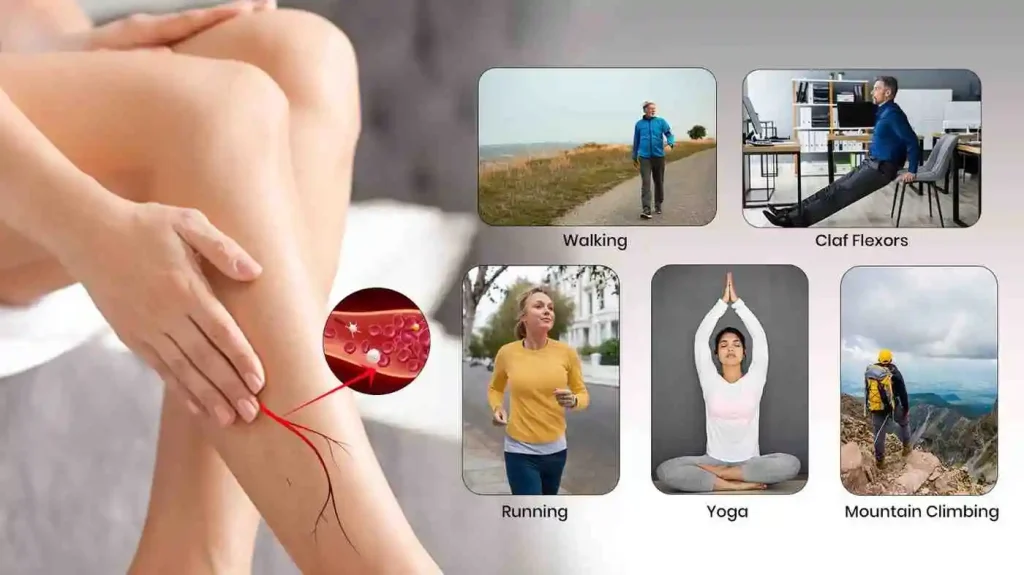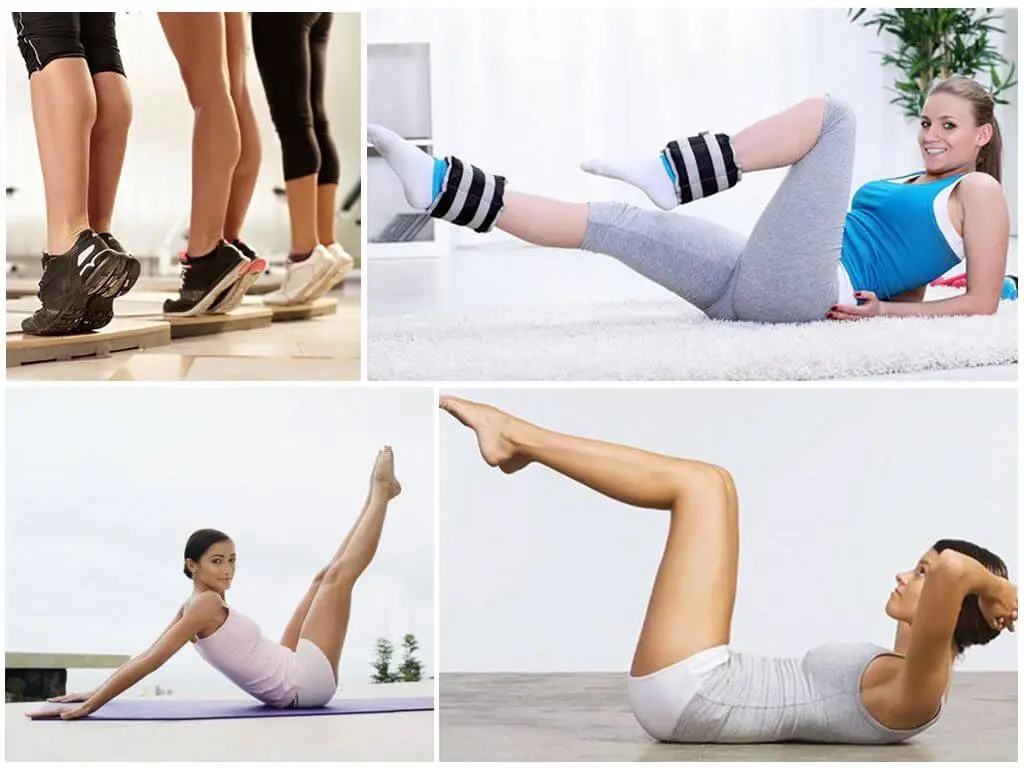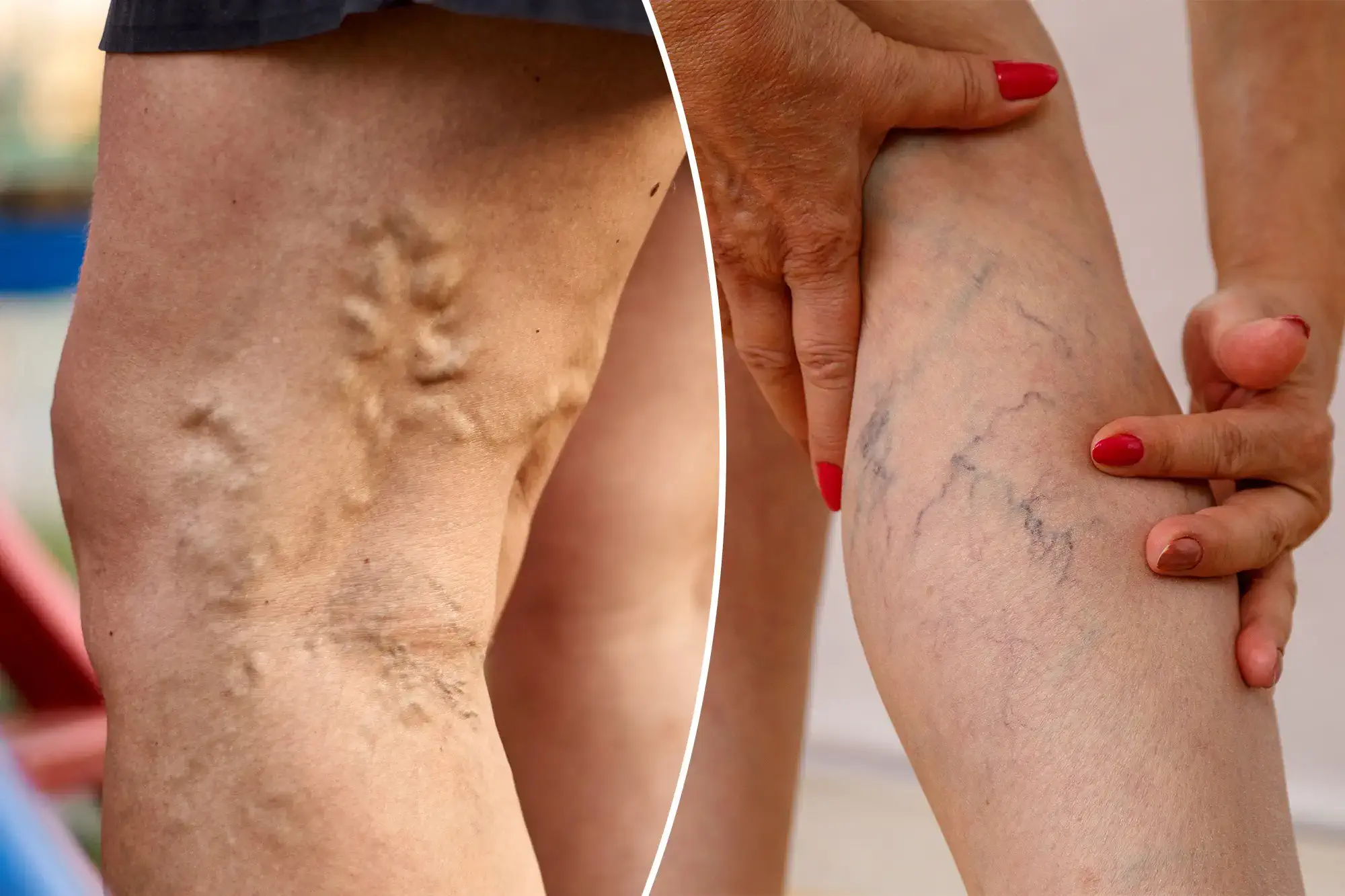
10 Best Exercise to Treat Varicose Veins
Can varicose veins disappear with exercise?! If you are wondering if exercise to treat varicose veins is beneficial, we must say yes! Fortunately, there are several exercises to reduce varicose vein symptoms. In fact, varicose veins are bulges and swelling in the veins close to the surface of the skin and usually occur in the veins of the legs. Varicose veins can cause pain and discomfort and sometimes cause more serious health problems.
As we age, varicose veins become more common. Why? The answer is very simple. In older ages, the one-way valves in our veins that prevent blood from flowing backward become weaker, allowing blood to flow backward. Varicose veins are more common in older people who spent a lot of time standing when they were young. However, other factors such as genetics, obesity, and pregnancy also play a role.
If you are an older person with varicose veins, know that you are not alone. At least 16% of seniors over the age of 60 have varicose veins. There are many ways to treat varicose veins in the elderly, but the most lasting treatment method is exercise. In this article from Human Health Mag, we will introduce some of the best exercises for varicose veins.
Why Should You Exercise to Treat Varicose Veins?
Exercise to treat varicose veins is one of the best ways to treat this condition. Exercise helps treat varicose veins by improving circulation, strengthening leg muscles, and reducing pressure on the veins. But does exercise eliminate varicose veins? The short and simple answer is no; exercise cannot eliminate varicose veins. Once varicose veins develop, they cannot be completely eliminated. But that doesn’t mean exercise is useless. Exercise can help reduce the symptoms of varicose veins and temporarily reduce the pressure on the veins. As a result, exercise is beneficial for varicose veins, but it cannot completely cure them.
One of the causes of foot pain in the elderly is varicose veins. Varicose veins are caused by poor circulation in the veins. Poor circulation puts pressure on the walls of the veins, causing them to swell and bulge, causing them to become rope-like. Exercising improves blood flow to the legs and arms, improves muscle strength, and also reduces the amount of pain and discomfort you experience. Do Light, low-impact exercises like walking and cycling are ideal for people with varicose veins. Of course, this doesn’t mean you can’t do more strenuous, high-impact exercises. It’s best to consult with a varicose vein specialist before starting any exercise program.

Best Exercise to Treat Varicose Veins
In this section, we will introduce some of the best exercises to treat varicose veins. To achieve the best possible results, these exercises should be performed under the supervision of a specialist doctor.
1- Walking
The simplest exercise you can do is to walk more. Let your legs move more. Walking is a great way to improve blood flow in your legs. You can also use the stairs instead of using the elevator. Even if you walk a little around your neighborhood before going to work, this will have a significant impact on improving the symptoms caused by varicose veins.
2- Foot pedal exercise
First, lie on the floor and place your hands on the floor on both sides of your body. If you prefer, you can also place your hands under your buttocks to put less pressure on your lower back. Lift your legs off the floor and pedal like you are riding a bicycle. The higher you keep your leg while doing this movement, the more blood flow will increase in your legs. On the other hand, if you keep your leg close to the ground, the more pressure will be put on your abdominal muscles and the endurance of your abdominal muscles will increase. Continue the exercise until you feel the blood circulation in your legs and the pain you had in your leg is relieved a little.
3- Raising the leg
Lie on the floor and place your hands under your buttocks to reduce the pressure on your back. Press your buttocks towards the ground and also contract your back muscles and then raise one of your legs until your leg is perpendicular to the ground. Hold your leg in this position until you feel the blood flowing down your leg, calf and thigh. Then lower your leg and do the same with the other leg.
To make this exercise easier, lie down close to a wall with your hips close to the wall and then raise both your legs and lean against the wall. This way, your legs will be relaxed even when they are up. Keep your legs up until you feel the blood flow and then lower your legs. You can rotate your ankles to improve blood flow while your legs are up.
4- Side Lunges
Stand with your feet hip-width apart. Take a step to the right with your front foot, while bending your left leg 90 degrees. To return to the starting position, slowly straighten your left leg and bring your right leg back towards your left leg so that your feet are hip-width apart again. Now repeat this movement for your left leg.
5- Swimming
Hydrotherapy for the elderly can treat varicose veins in these people. Swimming has many benefits over other sports. If you have noticed, it seems that you weigh less when you are underwater, this difference in buoyancy is actually very effective in relieving some of the pressure on your veins. By reducing pressure, your body experiences better blood circulation. This helps your veins to deliver blood to the heart better than when you are on land.
6. Heel and Toe Raises
Try to walk on your toes regularly and stretch your calf muscles. Walk on your toes for a few minutes. Or you can place your toes on the edge of a step or step so that your heel is in the air and then walk up and down on your toes. Do this 30 times to engage your calf muscles. This will cause the veins to contract, so they send blood up with more force and the blood does not pool in your legs.
7. Boat Move
Sit down and keep your back straight. Place your hands on the floor behind your back and press, then slowly lift your legs (which are bent at the knees) off the floor. In this position, your shins will be parallel to the floor. Now try to lift your hands off the floor while maintaining balance in the pelvis and pull them forward and towards your shin. Try to keep your back straight.
8- Leg lock movement
Lie on your back and stretch your legs. Contract the muscles of your left leg and try to keep the back of your thigh completely in contact with the floor. Bend your right knee and pull it towards your chest. Lock your hands around your shin and under your knee. Now lift your head, neck and shoulders off the floor and try to bring the tip of your nose closer to your right knee. Hold this position for a few seconds and then slowly lower your head and shoulders and lower your leg. Repeat this movement up to three times for the right leg and three times for the left leg.
9- Knee and ankle bend
Lie on your back and bend one of your knees towards your chest and hold the back of your knee with your hand. Slowly rotate your ankle to one side and then the other. Repeat with the other leg. Make sure your muscles are fully engaged throughout the exercise and that your thigh or ankle are not sagging. Since you are lifting your leg and engaging your muscles, this will take the strain off your veins and strengthen the other muscles in your leg.
10- Foot Raise
If you sit for a long time, this is a great exercise to work your lower leg muscles. Lift your toes off the floor so that your heel is the only point of contact with the ground. Then lower your leg and this time lift your heel off the floor until your toes are the only point of contact with the ground. Try to do this exercise with your legs regularly while you work.

Harmful Exercises for Varicose Veins
Which exercise should I avoid in varicose veins? Above, we introduced exercise to treat varicose veins. Along with these exercises, there are also movements and activities that worsen varicose veins. These exercises include:
- Running
Although running has a number of wonderful benefits for the heart and blood vessels, it can cause serious harm to people with varicose veins because it increases your blood circulation. When you run, you put a lot of pressure on the ground or treadmill, resulting in a lot of pressure and vibration on your legs. However, if your veins do not have severe problems and you really like to run, you can do it slowly on grass or another soft surface, which will reduce the negative effects of the treadmill or concrete.
- Weightlifting
If you have varicose veins, weightlifting may cause many health problems, despite bringing the above benefits to you. Weightlifting is a strenuous exercise that puts a lot of pressure on your venous circulation and can even worsen venous problems.
Importance of Doing Exercise to Treat Varicose Veins
Varicose veins in the elderly cause problems and discomfort that make it very difficult to tolerate varicose veins over time. Fortunately, exercise to treat varicose veins can control this disease to a large extent. Reasons why varicose veins should be taken seriously include:
- Discomfort: 65% of seniors over 60 who have varicose veins report at least one symptom of varicose veins in the legs, which is of course accompanied by pain and discomfort.
- Swelling: Fluid in the veins can leak out of the veins and surrounding tissue, sometimes causing significant swelling. Compression stockings may help with this, but as varicose veins worsen, the swelling also increases.
- Limiting physical activity: Over time, as varicose veins overcome the veins in the legs, does it become difficult to do regular morning exercises or do physical activities such as running, tennis, cycling due to the discomfort and pain caused by varicose veins? Talking to your doctor about your varicose vein treatment options can help you get back to your normal routine.
- Bleeding: Varicose veins are close to the surface of the skin and full of blood. Even small cuts can cause bleeding that is difficult to control. Treating varicose veins in the elderly can improve this problem as well.
- Blood clots: Slower blood flow greatly increases the chance of blood clots forming, so treating varicose veins in the elderly and improving blood flow can reduce your risk of developing a blood clot.
- Leg ulcers: Leg ulcers heal slowly or not at all. Swelling and other changes in the skin prevent the body from healing even from minor injuries. Treating varicose veins in the elderly can probably help prevent leg ulcers.
- Skin infections: In addition to problems and wounds that don’t heal, the swelling from varicose veins increases your risk of developing a skin infection called cellulitis. If you have a red, swollen, or painful vein or any of these in your leg, you should see a doctor immediately.

Important Tips for Exercising for Varicose Veins
Now that we’ve introduced the best exercise to treat varicose veins and the worst exercise for varicose veins, it’s time to give you some exercise tips. Some activities may make varicose veins worse. It’s best to avoid these activities:
- Standing or sitting for long periods of time; if your job requires you to stand or sit for long periods of time, you should take regular stretching breaks.
- Sitting cross-legged (like sitting on a toilet for a long time) can reduce blood flow to your legs. Always keep your feet flat on the floor.
- Lifting heavy objects can put a lot of pressure on your leg veins. Learn proper lifting techniques and don’t push yourself too hard.
- Avoid wearing clothing that is too tight, especially around the waist and legs. This can reduce blood flow.
Concluding Remarks
Varicose veins can cause discomfort and pain, especially in older people. Therefore, exercising to treat varicose veins has many benefits for these people. In fact, varicose veins can be treated at home, and changing your diet and lifestyle can improve symptoms. People with severe varicose veins may want to seek medical treatment to reduce their appearance and improve their condition. But don’t worry, exercise is one of the most permanent treatments. Of course, talking to a doctor will help a person make the best and most informed decision about the correct treatment for varicose veins.
We’re curious to hear your thoughts! What’s your take on this topic? Comment below and join the conversation; your opinion could spark new ideas!

Frequently Asked Questions
What are Spider Veins or Varicose Veins?
Varicose veins are veins in the legs that are enlarged and swollen due to incompetent venous valves. Varicose veins are twisted, their protrusion is felt through the skin, and over time they turn blue.
How Are Varicose Veins Diagnosed?
A qualified doctor can diagnose varicose veins using methods such as ultrasound. Ultrasound is performed to assess the function of the venous valves and to examine the anatomy of veins whose valves are impaired.
When Should we See a Doctor?
Non-surgical home treatments and self-help measures can relieve varicose vein pain and prevent varicose veins from getting worse. However, if the appearance and symptoms of varicose veins are bothersome or if home treatments are not effective, you should see a doctor.
What Are the Complications of not Treating Varicose Veins?
Varicose veins become more severe over time. If varicose veins are not treated, varicose veins may lead to complications such as phlebitis or chronic wounds or injuries.
How Can Varicose Veins be Prevented?
Unfortunately, there is no way to completely prevent varicose veins, but you can control some symptoms by maintaining a healthy weight, exercising regularly, avoiding standing or sitting for long periods of time, and wearing compression stockings.
